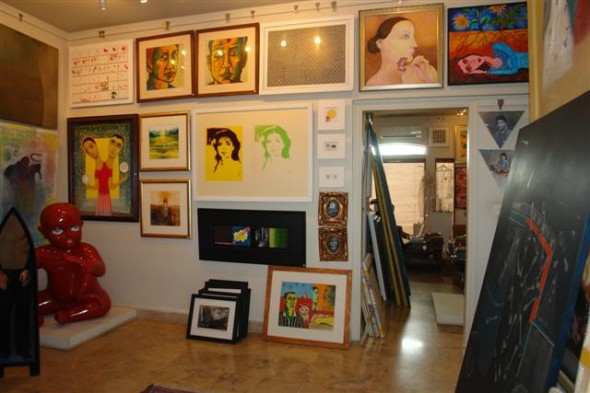Renowned curator and owner of the Canvas art gallery in Karachi, Sameera Raja talks to Mashaal Gauhar and Rizwan Qureshi about Pakistan’s dynamic art scene and the emergence of contemporary art in recent years.
After graduating as an architect from Pakistan’s prestigious National College of Arts (NCA), Sameera was acutely aware of the stark absence of a contemporary art gallery in the country. “I was working here as an architect but I realised that there was no contemporary art gallery. There were just three art galleries at that time: Chowkandi, Imaam Sahib’s gallery and the V.M gallery,” says Sameera.
Canvas has emerged as one of the country’s leading art galleries, has the success of Canvas surpassed her expectations? “I don’t think I ever thought of it as going to any degree of success. I don’t think I ever measured that. I just do what I want to do and exhibit what I want to exhibit. It’s an ongoing journey.” Sameera also avoids viewing her work through the binary prisms of success and failures, “If you are going to start thinking of work in terms of successes and failure, then you will get scared of the failures and it will pull you down.” She underlines the importance of having faith in yourself and following your instinct, “But, if you just go with your gut and start thinking: ‘okay this is what I believe in’, and if you listen to that self belief then I think you just progress more — and that is what probably makes Canvas stand apart from other art galleries. We don’t equate success by its financial outcome but through the quality of work that we exhibit. We stand up and say, this is the art work that we believe in.”
Sameera discusses the diversity of Pakistan’s contemporary art which has attracted a great deal of international interest, “I think the time to categorise Pakistani art into the slot of: ‘it’s all about guns, bombs, mullahs and grenades’ is gone. The fabric of our society is so diverse and the kind of sensibility the artists have and the kind of exposure that they have is stratified to such a degree that it makes it very interesting. We live in very interesting times and such an interesting environment shines through in your work — and that is really what sets it apart from everywhere else; and the fact that it is not conforming to a certain mindset. Everybody has got their own personal vocabulary. And I think that individual trait is what is very exciting.”
The term ‘contemporary art’ is ambiguous and can be very loosely defined, but what does it mean to Sameera? “Anything that is produced in the here and now is contemporary art because the vocabulary is of today and not of the past. Anything happening in the 21st century as of right now is contemporary art. The mediums have changed so much that it’s not just about painting; it’s about video art, media, installations — so many things we are exposed to which is all coming out now. There is a lot of art that comes under this definition,” explains Sameera.
However Sameera remains concerned about the lack of documentation and preservation of Pakistani art which has led to the loss of great masterpieces and important art history, “We do not have a museum of modern art or all of the past collections would have been there. It’s very disjointed at the moment and a lot of art that has been lost because there was no concerted effort to make sure it was acquired and preserved as art history. But, none of this is negative because this make us aware of the responsibility we have towards the future: to ensure that the present is not lost in the way our past has been lost.”
With a lack of support from the government, Sameera urges the private sector to ensure the preservation of Pakistan’s art, “Unless the government makes a concerted effort, preserving art history will not be a priority. But where the public sector fails, the private sector needs to step in. For that you would need people who are willing to put up trusts and donate their collections to someone who can run it. Internationally, some of the greatest state-owned works have been donated by private collectors. Maybe multinationals need to step in and acquire collections and display them at their offices and build collections, maybe something will come out of that. That will be a way forward. The corporate buying trend has still not started, even though I have been talking about that for a decade.”
With such unparalleled exposure to Pakistan’s artists, does Sameera have any all time favourites? “I honestly think that there are many Pakistani artists who have so much going for them and they are all different genres of art, so whether it is painting or installations or miniatures or sculptures, call it what you may, but they are all fantastic.”




